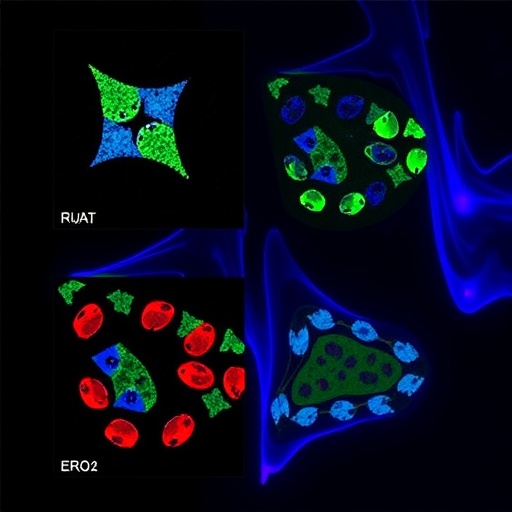
Credit: Cincinnati Children’s
CINCINNATI – Scientists at Cincinnati Children’s just received a 5-year grant totaling $5.3 million from the National Institute of Environmental Health Sciences (NIEHS) to advance research into the relationship between air pollution and mental health in children and adolescents.
The grant will enable the scientists to conduct new air pollution exposure studies and analyze its impact on newly collected information about adolescents’ mental health and brain structure, organization, and function.
The lead investigators of the project are Kim Cecil, PhD, director of radiology research for the Imaging Research Center; Patrick Ryan, PhD, Division of Biostatistics and Epidemiology; and Kimberly Yolton, PhD, director of research in the Division of General and Community Pediatrics.
Approximately 50% of Americans will meet the criteria for diagnosis of a mental health disorder in their lifetime with the initial onset occurring in childhood or adolescence. More than one in five adolescents will experience a mental health disorder, including depression and anxiety, with the prevalence increasing. This puts them at a higher risk for suicide, as suicide is now the 2nd leading cause of death for adolescents in the US, and 3rd leading cause worldwide. The potential lifelong impact of these conditions makes it critical to find preventable causes, the researchers say.
Few studies have looked at the impact of air pollution exposure on mental health disorders in children and adolescents. Cecil, Ryan, and Yolton previously found that childhood air pollution exposure is associated with increased risk for depression and anxiety at age 12 years and that children exposed to higher levels of air pollution early in life had changes in brain structure. However, the role of air pollution in the onset and persistence of mental health disorders during adolescence, and changes in brain structure, organization, and function linked to these outcomes, remain poorly understood.
“The role of environmental exposures on mental health outcomes is a relatively new area,” says Ryan. “Air pollution has been shown to be neurotoxic, but most studies focus on behavior or cognition. Few studies have examined the role of environmental exposures, including air pollution, on mental health. Studies like this one are a critical first step to understand how environmental exposures influence mental health in childhood and guide future public health decisions.”
The researchers plan to build on data from the Cincinnati Childhood Allergy and Air Pollution Study (CCAAPS) and the Health Outcomes and Measures of the Environment (HOME) Study. Both groups include children who have been followed from birth and were evaluated at age 12 for mental health symptoms and changes in brain features. In the new study, the researchers plan to follow the same children into young adulthood to learn how air pollution may influence the persistence of mental health symptoms and additional changes in the brain.
“People almost exclusively think about mental health as having genetic origins or being caused by one’s personal circumstances such as stress, adversity, etc.,” says Cecil. “The impact of factors from the environment, such as air pollution, are often not considered.”
The combination of environmental epidemiology, neuroimaging and a comprehensive psychological battery makes this a first-of-its-kind study.
“The uniqueness is in all these disciplines coming together. The environmental health experts and mental health experts have rarely compared notes,” Yolton says. “We’re fortunate to have those lines of communication open in our work.”
By combining the two study cohorts, researchers will have access to data from 500 participants. Yolton’s assessment battery will comprehensively characterize behaviors and mental health. Air pollution models developed by Ryan and co-investigator, Cole Brokamp, PhD, Division of Biostatistics and Epidemiology, will allow them to look at different components of air pollution along with distinct time points from birth to 18 to see whether there’s a relationship between their brain and air pollution levels. Meanwhile, Cecil and her team will use neuroimaging tools to determine if structural and functional changes in the brain are part of normal development or whether they are linked to pollution.
“We know many factors influence a child’s behavior and mental health, along with their brain structure. With the larger size of the study cohort, we can better tease apart effects from those factors compared to the ones related to air pollution,” Cecil says.
Yolton says the researchers have been trying to pull the two study groups together for years.
“I’m excited that we finally have the opportunity to combine these well-characterized cohorts. Our ability to look at contributions to mental health from early adolescence to young adulthood will be extremely impactful. We’re going to be able to determine if the air pollution we’re all exposed to could be contributing to the rising prevalence of mental health problems. This could result in policy changes to reduce air pollution exposures and thus lessen the risk of mental health problems.”
###
Media Contact
Jennifer Tan
[email protected]




